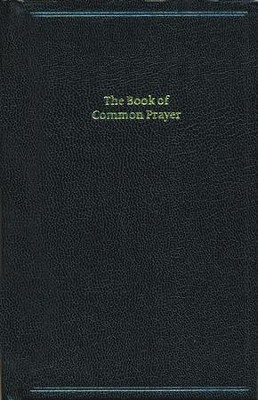

It included a few small but significant changes, which allowed for belief in the real presence of Christ in the Eucharist and removed from the litany an offensive prayer against the pope. After Elizabeth I became queen in 1558, the prayer book of 1552 was restored by another Act of Uniformity (1559). In 1553 the new Catholic queen, Mary, restored the old Latin liturgical books. The revision made great changes in its text and ceremonies, all in a Protestant direction. The latter prevailed, and in 1552 The Second Prayer Book of Edward VI was introduced. It was viewed as a compromise between old and new ideas and was in places diplomatically ambiguous in its implied teaching it aroused opposition from both conservatives and the more extreme reformers. The First Prayer Book, enacted by the first Act of Uniformity of Edward VI in 1549, was prepared primarily by Thomas Cranmer, who became archbishop of Canterbury in 1533. The Book of Common Prayer has also influenced or enriched the liturgical language of most English-speaking Protestant churches. Outside the Commonwealth most churches of the Anglican Communion possess their own variants of the English prayer book. The prayer book of 1662, with minor changes, has continued as the standard liturgy of most Anglican churches of the British Commonwealth. First authorized for use in the Church of England in 1549, it was radically revised in 1552, with subsequent minor revisions in 1559, 1604, and 1662. Britannica Explains In these videos, Britannica explains a variety of topics and answers frequently asked questions.īook of Common Prayer, liturgical book used by churches of the Anglican Communion.


Demystified Videos In Demystified, Britannica has all the answers to your burning questions.Britannica Classics Check out these retro videos from Encyclopedia Britannica’s archives.
#THE RED PRAYER BOOK EDITION 6 HOW TO#
Offers advice on which property-protective provisions in constitutional law maximize the likelihood of a successful challenge to restrictive regulations, as well as advice on how to mount a legal challenge which will not be dismissed on jurisdictional or procedural grounds. Law of Property Rights Protection: Limitations on Governmental Powers, Third Edition: Analyzes relevant and current case law, and identifies (1) which challenges by private property owners were successful, (2) what facts seemed compelling to reviewing courts considering property-restrictive regulations, and (3) what arguments by property owners tend to fail in the eyes of reviewing courts. The book is organized according to the many ways that government powers over private property are limited, by the federal and state constitutions, the common law, and equitable principles and has been cited by the United States Supreme Court, federal courts, and state appellate courts. The relevant law is constantly changing and evolving, so count on the Law of Property Right Protection to bring you completely up to date. An enormous amount of litigation, at both the federal and state level, has stemmed from questions surrounding the extent to which government may restrict or even prevent certain private property uses. This battle between property and regulation is one of the most emotionally charged and fiercely contested issues in contemporary law. Federal, state, and local governments often wish to restrict or condition uses of private property, while private property owners wish to avoid or seek compensation for such regulatory controls. Law of Property Rights Protection: Limitations on Governmental Powers, Third Edition is a comprehensive, up-to-date review of the on-going battle between government's desire to regulate and limit private property use, and property owners' equally powerful desire to avoid economically damaging or unreasonable or unconstitutional limitations. Law of Property Rights Protection 3rd Edition Book Description : Law of Property Rights Protection 3rd Edition


 0 kommentar(er)
0 kommentar(er)
